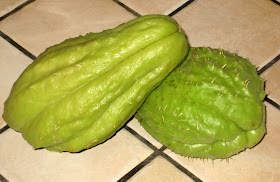Ingredients
Olive oil
2 Delicata squash of similar size
A small handful of pine nuts
1 small to medium leek, white and light green parts, minced
8-10 fresh sage leaves, sliced into thin ribbons or chopped
Salt and freshly ground white pepper
Preheat oven to 375. Rinse and dry squash, cut in half lengthwise, and scrape out the seeds. Rub cut face with a little olive oil and place face down on a foil-lined baking sheet. Roast for 25-35 minutes until they just start to soften slightly.
 Meanwhile, heat a small pot over medium heat. Add the pine nuts and toast, stirring or tossing occasionally, until they begin to turn golden. Push to the side and add a generous glug of olive oil. Wait for a few seconds till it heats, then stir to coat the pine nuts. Add leeks and continue to cook for several minutes, stirring, until they soften. Add sage and a pinch or two of salt, cook for another minute, then add white pepper to taste and turn off the heat.
Meanwhile, heat a small pot over medium heat. Add the pine nuts and toast, stirring or tossing occasionally, until they begin to turn golden. Push to the side and add a generous glug of olive oil. Wait for a few seconds till it heats, then stir to coat the pine nuts. Add leeks and continue to cook for several minutes, stirring, until they soften. Add sage and a pinch or two of salt, cook for another minute, then add white pepper to taste and turn off the heat.Turn squash cut side up on the baking sheet. Spoon the leek mixture into the squash halves, spreading it evenly along each one, then return them to the oven for an additional 5-10 minutes until the squash is just soft enough that it gives easily when a spoon is pressed into it.
Serve hot. I just found out that you can eat the skin of a Delicata squash and it's often delicious (thanks, Dad), but we thought this version was even better just scooping out the insides. This would be a good dish for a dinner party -- fancy-looking and fancy-tasting, but pretty much a breeze to make.
Serves 4 as a dinner party side dish when everyone is on good behavior, or 2-3 if you're unconstrained by social norms and can't help but go back for seconds.
















